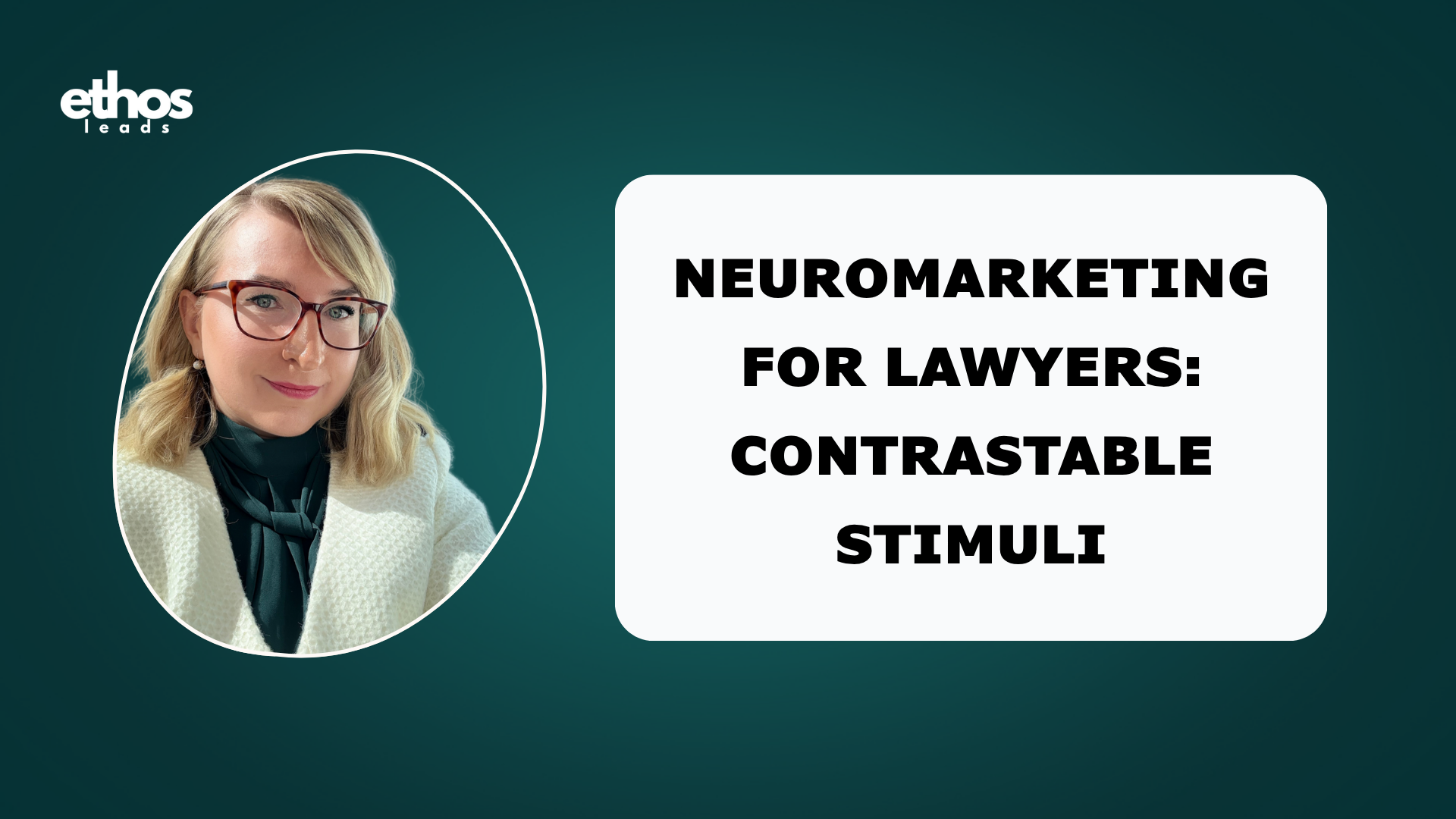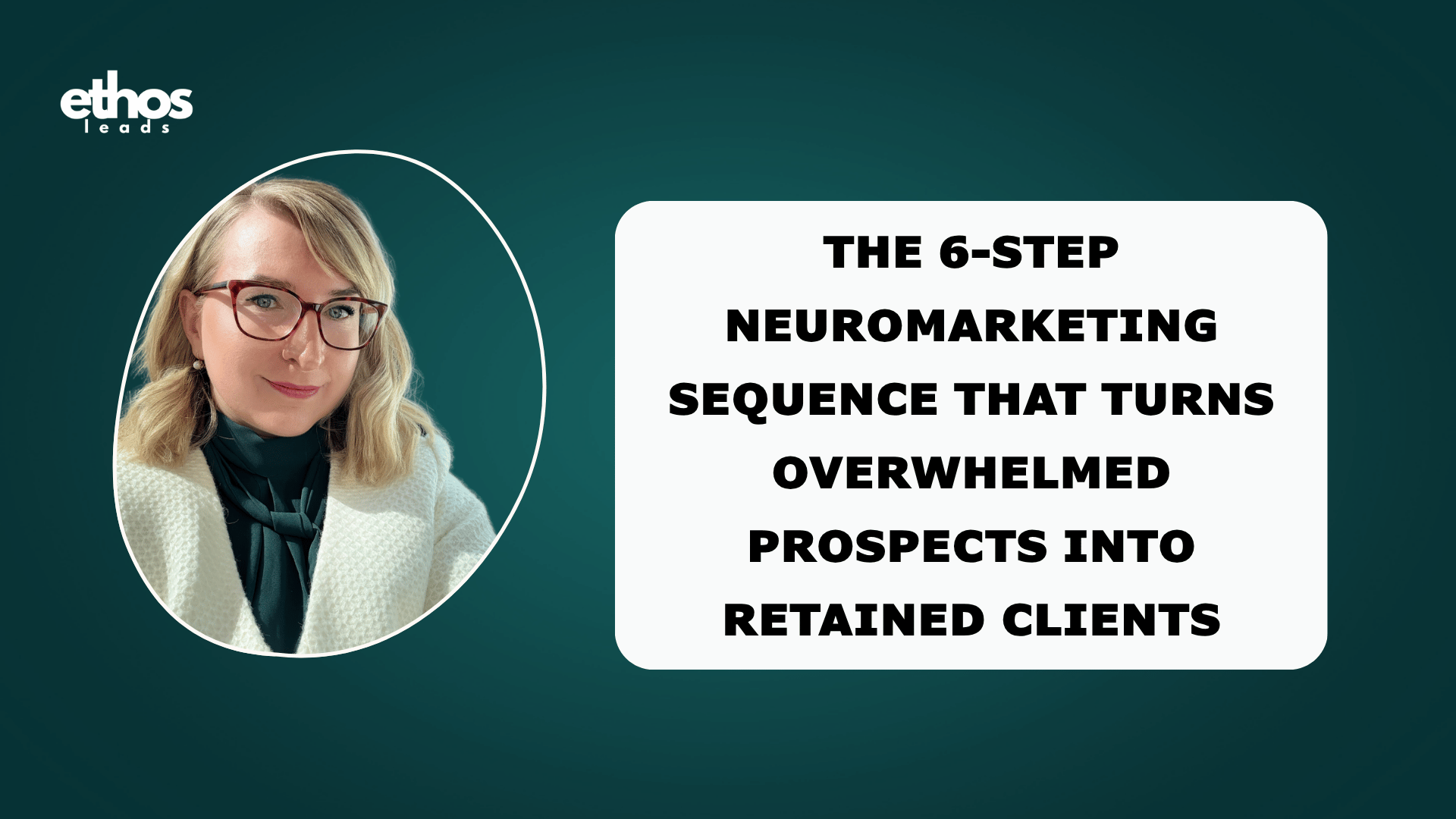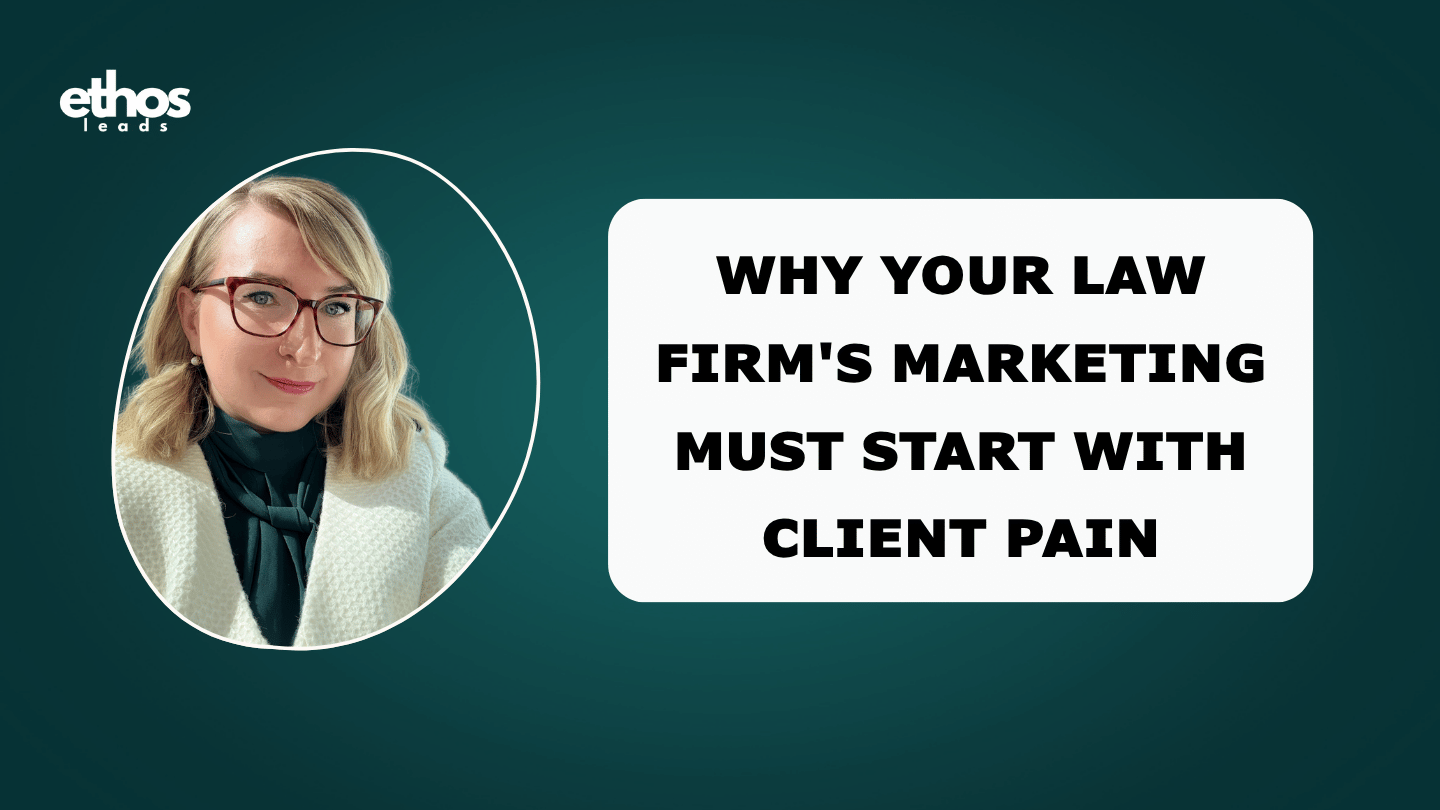Neuromarketing for Lawyers: Contrastable Stimuli
Why Simplicity Wins Clients in Law
Your potential clients facing legal issues are often overwhelmed, stressed, and desperate for solutions. They're dealing with divorce proceedings, business disputes, criminal charges, or personal injury claims, situations that trigger their primal brain's fight-or-flight response.
In this heightened emotional state, the last thing they want is to sift through dozens of law firm websites, compare endless lists of services, or evaluate complex fee structures. Yet paradoxically, many legal marketing efforts do exactly that, they overwhelm prospects with choices, credentials, and complicated information.
Dr. Barry Schwartz's research on the "paradox of choice" reveals that while people claim they want more options, they subconsciously resist using mental energy to evaluate them all. This is particularly relevant for legal clients who are already cognitively overloaded by their legal problems. Their primal brain seeks the fastest path to relief, not the most comprehensive analysis of available options.
When your potential clients are under stress, their brains crave clarity. They don’t want to sort through dozens of legal options. They want to know:
“What’s my best option, and how fast can I take it?”
So, instead of overwhelming prospects with long lists of services or credentials, give them contrast. The easier you make the decision, the faster the brain says yes.
This is where neuromarketing comes into play, specifically, the principle of Contrastable Stimuli, drawn from the book The Persuasion Code by Christophe Morin and Patrick Renvoise.
The contrastable principle recognizes that the primal brain seeks quick decisions. Too many options slow it down, causing confusion and inaction. Contrastable messages simplify the choice, making the best option obvious, and the wrong choice (or inaction) clearly painful.
The Paradox Lawyers Face
Solo and small firm lawyers often do the opposite of what works.
- They present every possible practice area, thinking it proves capability.
- They fill their websites with detailed resumes and long paragraphs of legal jargon.
- They describe themselves as “one of the leading firms” in their area.
But the primal brain doesn’t respond to that. It doesn’t want more information, it wants a clear, obvious choice.
Understanding Contrastable Stimuli
The primal brain, which has been guiding human survival for nearly 500 million years, avoids wasting energy on unnecessary decisions.
Our rational brain says, “More options mean more chances to get it right,” but our primal brain says, “Too many options are risky, tiring, and overwhelming.”
Contrastable stimuli work because they simplify decision-making for the primal brain:
- It reduces cognitive effort.
- It highlights a clear before-and-after transformation.
- It magnifies pain, then shows relief as the obvious solution.
Instead of presenting multiple complex options, you create a clear contrast that makes the choice obvious. This principle operates on a fundamental neurological truth: our brains process information through comparison and pattern recognition, not absolute evaluation.
For lawyers, this means moving away from generic statements like “We are one of the leading personal injury firms in the region” toward specific, contrastable claims that highlight unique benefits. The goal is to make your firm the obvious choice by creating contrasts that speak directly to your client's pain points and desired outcomes.
Why Contrast Matters in Legal Marketing
For lawyers, the contrastable principle is powerful because clients:
- Already feel overwhelmed by complexity.
- Want someone to simplify the decision-making process.
- Need reassurance that hiring you will lead to a better, safer outcome.
Without contrast, your messaging sounds flat:
- “We are an experienced family law firm.”
- “We offer business litigation services.”
These statements don’t activate the primal brain because they lack urgency, relevance, and contrast.
With contrast, you paint two vivid pictures:
- “Without a lawyer, you risk losing custody of your children. With our guidance, you’ll have a plan to protect your parental rights.”
- “Miss a filing deadline, and your business could lose its chance in court. With our firm on your side, you’ll stay protected and on track.”
Contrast pushes the primal brain toward action.
How Lawyers Can Apply Contrastable Stimuli:
1. Use “Before and After” Stories
Stories make abstract legal issues concrete. Show the difference between life before hiring you (pain, stress, risk) and life after (relief, protection, resolution).
Example (Personal Injury Lawyer):
- Before: “You’re stuck with medical bills, missing work, and fighting with insurance companies alone.”
- After: “We’ll fight for compensation so you can focus on healing and rebuilding your life.”
Develop detailed case studies that walk prospects through the entire journey from problem to solution, emphasizing the emotional and practical transformation your services provide.
When people see the pain magnified and then the relief, you make the choice obvious.
2. Highlight the Pain of Inaction
The primal brain avoids pain more than it seeks pleasure. Make the risks of not hiring you clear.
Example (Bankruptcy Lawyer):
- “If you ignore debt collectors, you could lose your home. But filing for bankruptcy now could protect your property and give you a fresh start.”
Example (Employment Lawyer):
- “Wait too long to act, and you may lose your right to sue. Act now, and you can fight for justice and compensation.”
3. Keep Choices Simple
Don’t overwhelm prospects with every service you offer. Instead, present one clear path forward.
Example (Family Lawyer):
- Instead of listing: divorce, child custody, visitation, mediation, support modifications…
- Say: “Whatever your family challenges, we’ll create the right legal strategy to protect you and your children.”
This makes the decision feel simple: Hire this lawyer = protect my family.
4. Compare Yourself Against the Competition (Carefully)
Direct comparisons can be effective, as long as they remain ethical and factual.
Example:
- “Some firms assign your case to junior staff. At our firm, you work directly with an experienced attorney who knows your case inside and out.”
By contrasting, you highlight why you’re the obvious choice, without overwhelming clients.
5. Use Visual Contrasts
The primal brain processes visuals faster than words. Charts, timelines, and infographics help simplify decisions.
Example:
A criminal defense lawyer might use a side-by-side graphic:
- Without a lawyer: Jail time, record, fines.
- With a lawyer: Reduced charges, alternative sentencing, second chance.
Ethical Considerations and Authenticity
While using neuromarketing principles, it's important to maintain the ethical standards expected of legal professionals. Contrastable stimuli should always be:
- Truthful and verifiable. Use real client stories (with permission) and accurate outcome data.
- Relevant to your practice. Don't create false contrasts or exaggerate capabilities.
- Respectful of client confidentiality. Anonymize sensitive details while preserving the emotional impact.
- Professional in tone. Maintain dignity while being persuasive.
Measuring Success
To determine if your contrastable stimuli are working, track metrics that indicate engagement and conversion:
- Time spent on key pages (longer engagement with contrast-based content)
- Contact form completion rates (higher with clear before/after narratives)
- Phone call quality (prospects who are more informed and ready to move forward)
- Client acquisition costs (should decrease as messaging becomes more targeted)
Implementation Strategy
Start implementing contrastable stimuli in your marketing with these steps:
- Audit your current messaging for generic claims and complex choices.
- Interview recent clients to understand their before-and-after experiences.
- Identify your top three unique benefits that differentiate your firm.
- Rewrite key marketing materials using contrast-based narratives.
- Test and refine based on client response and engagement metrics.
Key Takeaways
To maximize the contrastable stimulus, remember:
- Less is more. Limit choices. Offer clarity, not complexity.
- Show the pain. Make the risks of inaction tangible.
- Highlight relief. Present your legal solution as the obvious escape from pain.
- Use stories and visuals. They make contrast immediate and memorable.
By reducing cognitive load, creating clear contrasts, and focusing on transformation rather than transaction, you position your firm as the obvious choice for clients who need exactly what you provide.
Related Articles:
Neuromarketing for Lawyers: An Ethical and Practical Guide for Solo and Small Law Firms
Neuromarketing for Lawyers: Personal Stimuli
How Personal Stimuli Convert More Clients
Neuromarketing for Lawyers: Contrastable Stimuli
Neuromarketing for Lawyers: Tangible Stimuli
Neuromarketing for Lawyers: Memorable Stimuli
Neuromarketing for Lawyers: Visual Stimuli
Neuromarketing for Lawyers: Emotional Stimuli
Neuromarketing for Lawyers: Integrating the Six Stimuli
FAQs About Contrastable Stimuli in Legal Marketing
- Isn’t highlighting risks manipulative?
Not if it’s truthful. Ethical marketing means presenting real risks clients face, then showing how you can help. - What if my practice area is highly technical?
Even technical clients (like businesses) face emotional contrasts: risk of losing revenue vs. stability and growth. Frame it in those terms. - Should I give multiple service options to show flexibility?
Present them, but frame one option as the clear best path. Too many choices overwhelm the primal brain. - How can I use contrast in consultations?
Walk clients through scenarios: “If we don’t act, here’s what could happen. If we take this approach, here’s the outcome you can expect.” - Do visuals really matter for law firms?
Yes. Side-by-side comparisons, charts, and timelines reduce complexity and make decisions faster.






